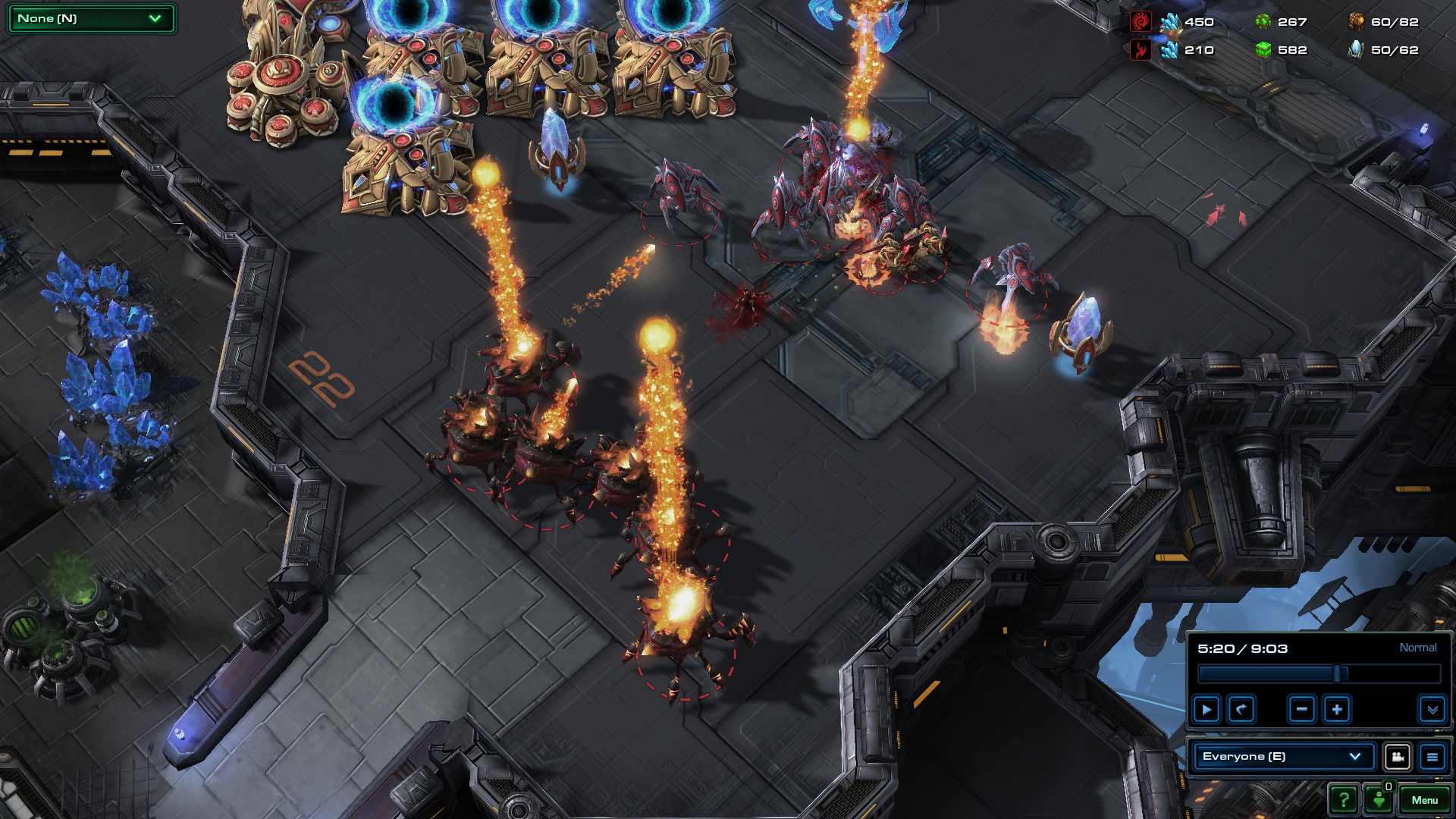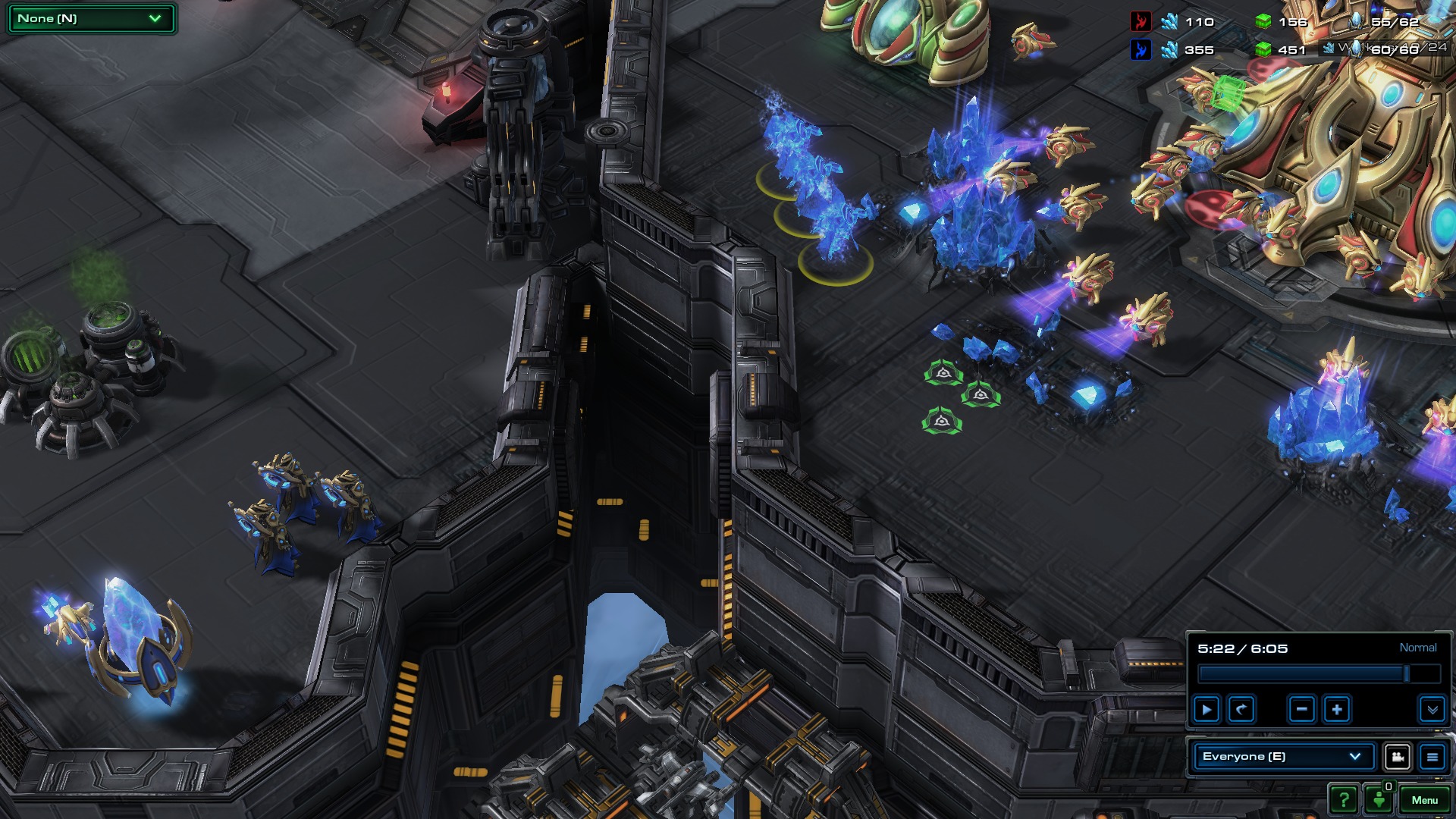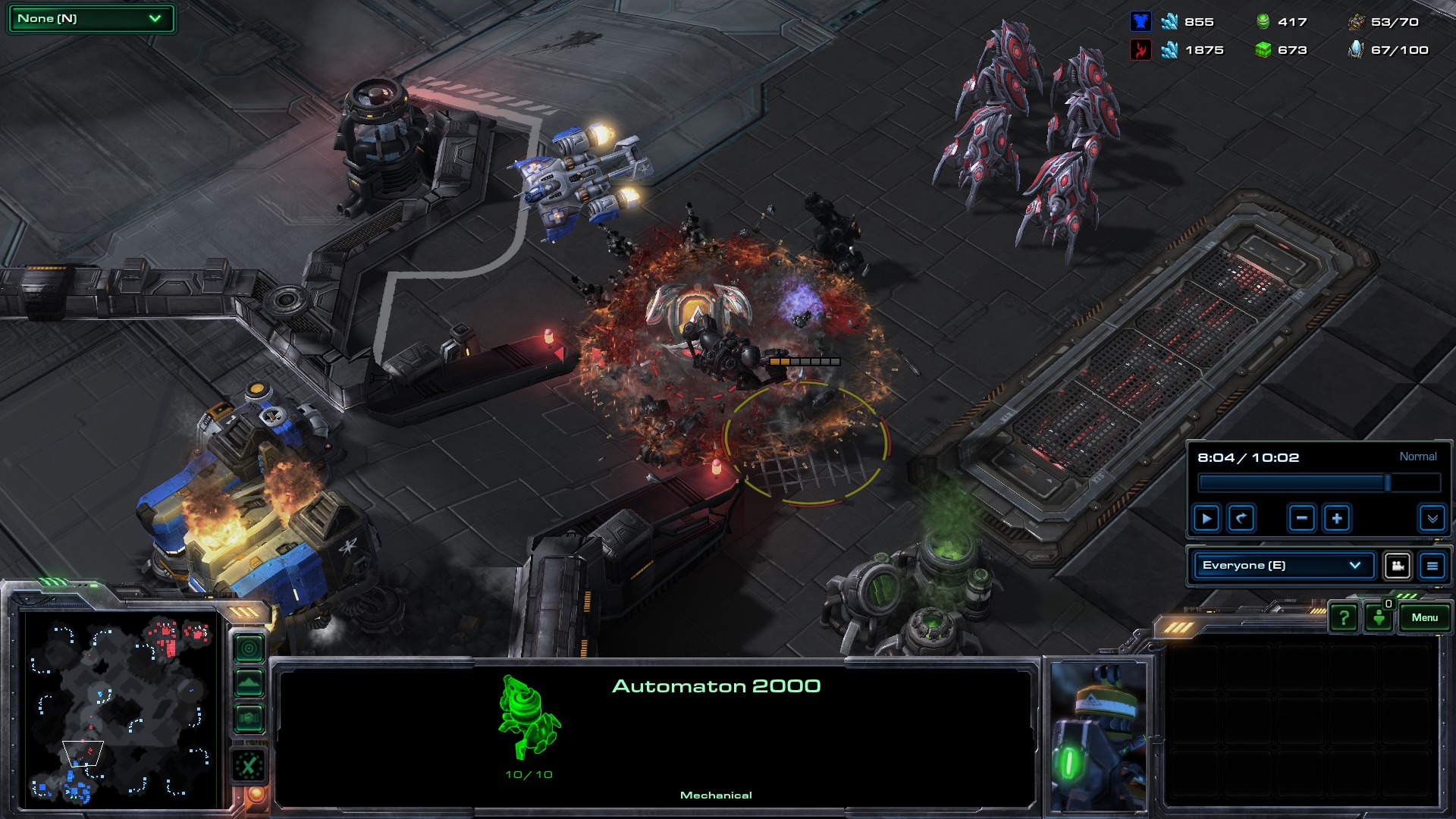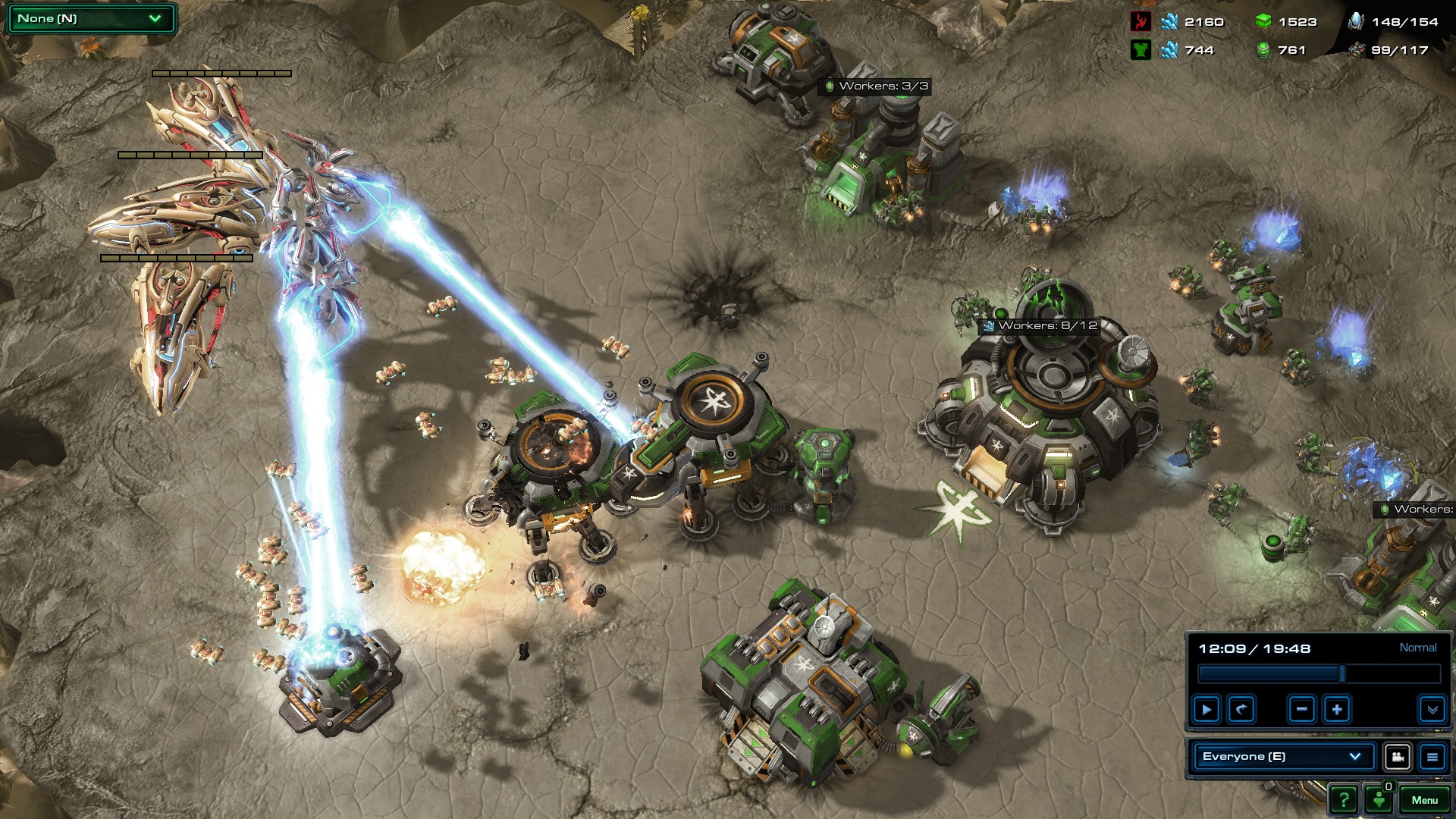StarCraft 2: Legacy of the Void beta preview

I've been playing the StarCraft 2: Legacy of the Void multiplayer beta for just over a week so far, and it’s unlikely that this beta period will be a short one. There may be many moons of changing, balancing, adding and cutting to go before LotV crosses the “when it’s done” threshold, but even so, there are definitely some trends that suggest how the launch might play out for professional players, longtime StarCraft 2 fans, and people like myself who haven’t played in a while.
The tone of the changes hint at a gameplan to keep—or possibly re-establish, depending on your perspective—StarCraft 2 as a foundational esports game. I’ve been away from the game for a few months now and StarCraft ain’t like riding a bike: The lost muscle memory is a Sisyphean boulder back at the bottom of a distressingly steep hill. But for whatever I lack as a competitive opponent on or off the ladder, I never stopped being a fan of this game as a spectator sport. I’ve stayed current with the professional scene, the ever evolving meta game and all the trials and tribulations therein. And it’s on that side of things—the professional and esports front—I’d like to start, because it seems evident that there is a real priority around ensuring the longevity of StarCraft 2 as a viable professional platform.

Under the 'micro' scope
In Legacy of the Void, Blizzard seems to be shifting focus from big picture map management to amping up the art of the individual engagement. Beta players are rewarded for active unit management—or ‘micro’ in the common esports vernacular—refocusing priority down to unit-against-unit combat rather than the tidal flows of map control. The big stars among new units shine brightest under careful micro-management, and when deployed strategically they can dispense staggering pain. These are units designed to completely flip the momentum in a game, where a moment distraction on either side can take a certain victory and cripple it.
On the Protoss side the new units are the Adept and Disruptor. While the Adept makes a nice general early-game ranged unit, its special ability allows it to quickly subvert well-crafted defenses and infiltrate weak spots by projecting an ethereal copy of itself to a designated location and then warping to that point. The Adept is a precision instrument, with high potential for harassment.
But where the Adept is the scalpel, the Disruptor is the battle axe. Essentially an amped up, multi-use Protoss version of the Zerg Baneling, the Disruptor, when activated, becomes briefly invincible, noticeably faster and can be sent into a throng of ground enemies to unleash a massive and potentially army-destroying explosion. Unless an opponent has exceptional army control and the ability to quickly split ground forces, just a couple of Disruptors can essentially end a game on their own.

For Terrans there is, so far, only one new unit: the Cyclone. The Cyclone locks onto a single target, and then is able to fire and move at the same time, which is nice, but what really sets it apart is the mindblowing range from which its persistent rolling missile launcher of doom can sustain its lock-on. Against a Cyclone, escape is never as simple as just running up a ramp or hitting the afterburners on your Medivac and calling it a day. Once locked, the Cyclone doesn’t need to have vision of or even be on the same elevation as its target to lob fiery death.
Finally, Zerg gets a fan favorite back in the rotation along with a new unit that rains corrosive bile from the skies. First up is the Lurker, an evolution of the Hydralisk that can burrow into the ground and deal long-distance splash damage through spikes that jut up through the dirt, harming ground units and buildings. Originally added in the first StarCraft’smuch beloved expansion, Brood War, its absence in the sequels has long been noted and lamented by fans.
Keep up to date with the most important stories and the best deals, as picked by the PC Gamer team.

Along with the Lurker comes the Ravager, a powerful evolution of the Roach, that unleashes mortar-like projectiles which land a few seconds after firing at a targeted location with potentially devastating results. Like the Protoss Disruptor, if it’s deployed against you and you aren’t paying attention, it may leave you wondering, “wait, didn’t I have an army here like 10 seconds ago?!”
Everything old is new again
Also present in the beta are numerous changes and additions for existing, often underused units like the Battlecruiser which can now warp to any location on the map even without vision; the Carrier, which can better control deployment of its squadrons of interceptors; Corruptors, which have had their Corruption ability replaced with a channeled damage dealing Caustic Spray; and Swarm Hosts, which can release locusts while unburrowed and can upgrade locusts into flying units.
The last big update that I spent some time with is Archon Mode, which allows two people to divvy up control of a single army. It’s a little bit like if someone else suddenly took over control of my left hand and then I was asked to go win a game of Jenga. It is the video game equivalent to the 1984 Steve Martin/Lily Tomlin classic All of Me.
It was an enjoyable mode even if my partner and I never quite seemed to be on the same page. All too often I’d spend the minerals he had been saving up for an expansion on a costly high tier unit, or I’d grab the army and send it one direction and immediately he’d take it back and send it in another. I can imagine how a team could act at an inhuman level with the right coordination, but with us it was far more a comedy of errors. Fun, yes. A practical gametype, at least for me, not as much.

Overall, my experience with the beta has been positive. LotV is much more focused on getting to the action quickly, including changes to the number of probes/workers/drones you get at the start of a round as well as how many resources are available. And, once the action is started, it wants you to be active in each battle, making each fight seem vital while rewarding the players who best manage those engagements. It’s certainly going to change the way casual players think about working their way through the ladder when the game finally releases, but more importantly, I think, it drives at improving the viewer’s experience of watching a game of StarCraft 2.
While it feels like a reasonable goal, I think it may end up being a tough line for Blizzard to walk. As it stands, StarCraft 2 is a game that already taxes and at time punishes casual players, and the idea of turning that particular dial up to eleven may be a difficult transition for returning, casual or new players. At the same time, staying relevant in the esports arena, particularly against juggernauts like League of Legends and Dota 2, is going to require some daring moves to continue to give viewers a reason to watch and care.
We’re a long way from release of Legacy of the Void, so there are no final conclusions to draw at this point, but the big plan is evident in every corner of the current beta, and it only remains to be seen whether Blizzard can actually deliver on being all these different things to all these different people. It’s no small order, but they’re not exactly riding this merry-go-round for the first time. Given the quality of the beta already, I wouldn’t be quick to bet against them.

